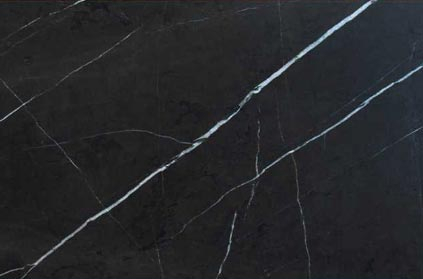PietraGray marble veins, advantage or disadvantage?!
Pietragray marble is one of the most famous and best-selling natural stones in the world. And it is very similar to the Italian stone of Petra.
This stone is one of the types of sedimentary stones, which is of carbonate type. In other words, most of this stone is composed of calcite mineral (calcium carbonate). The dominant dark color in this stone is due to the presence of organic and carbon sub-materials.
But one of the distinctive features of this stone is the presence of fractures that are generally filled with white materials such as calcite or secondary quartz. These veins have given a unique beauty to pietragray marble. But the question that arises is: Is the existence of such streaks only an advantage or is it also considered a disadvantage?!
To explain this issue, we need to look at the definition of mechanical weakness levels.
Definition of mechanical weakness levels
Mechanical surfaces are the parts of the stone where the cohesion and integrity of the stone is reduced or destroyed, and the strength of the stone may be reduced there.
From a geological point of view, stones can have various joints and fractures, which are known as mechanical weakness levels, but they can be divided into two primary and secondary types.
Among the types of weak mechanical surfaces, the following can be mentioned:
1.Layering: for example, layering surfaces in a stone such as travertine


2.Preferential tendency or schistosity: for example, in stratified schist
3.Filled or half-filled veins: for example, in pietragray marble

4. Secondary fractures: for example, fractures that may occur in the stone during mining or transportation.
Marble, which is a type of sedimentary stone, it is formed in the form of thick carbonate layers during geological life. The constituent parts of these stone are gradually deposited from semi-dee sea waters. The accumulation of these parts along with the application of multi-directional pressures [and sometimes heat] causes the petrification process to occur in this stone. This process may take tens of millions of years. If the marble is formed as thick layers, then the boundary between the layers plays the role of initial weak surfaces because they are formed simultaneously with the formation of the stone. But if the fractures in the marble stone are created after the completion of the petrification process and by factors such as tectonic forces, the mentioned levels will be of secondary types. In Isfahan Pietragray marble, various types of secondary weakness levels can be traced in abundance which are generally filled by other materials. The thickness of the filling material can vary from a few millimeters to a few centimeters. But veins and fractures have another aspect that can be beneficial. Identifying and locating such fractures in marble quarries causes that the blocks can be cut by the diamond cutting wire and then the blocks can be made with less energy and time. In other words, if the separation surfaces of the blocks are in the direction of the weak surfaces of the stone, The cutting and separation process is facilitated and the cutting efficiency is increased. But failure to investigate and properly identify these fractures can severely reduce efficiency A and the amount of mineral waste increases.
Factors affecting the quality and resistance of Pietragray marble:
- Joint Spacing: If the vertical distance between the gaps is greater than each other, Since the density of the seams will be less in a single surface or volume, the resistance of the stone also increases.


2. Joint Continuity: If the seams and cracks are discontinuous and separate from each other in the same direction, The stone resistance (especially the shear and tensile strength) will be higher than in the case where the fractures are straight and continuous.
3. Joint Filling: The more the cracks and joints are filled with materials such as calcite, the more the stone will maintain its integrity and be more resistant. Since Pietragray marble itself is made of calcium carbonate (calcite), as a result, the stone’s resistance will be better than if the filler material is weaker than the original stone.
4. Joint Opening: The more the opening of joints and cracks and the more their filling materials are, The resistance of the stone decreases. Because in this case, the difference of the species in the texture of the stone is more and it affects the strength and quality of the stone as well . Of course, it should be noted that, as mentioned, the thickness of the veins in Pietragray marble varies from a few millimeters to a few centimeters.

According to the mentioned cases, although the veins in Pietragray marble are the reason for its beauty, they will also cause the mechanical weakness of the stone. In other words, if this stone is exposed to mechanical stresses of compressive, tensile and bending types, it is vulnerable from the areas that have veins and there is a possibility of breaking from these parts under high stresses.
As a result, what seems very important is to minimize these damages through the repair of veins and fractures during stone processing. The mentioned repair with net and epoxy and the tensile and bending resistance of the stone can be restored to some extent.
Author: Saeed Nejati

© Copyright 2023 M.STONE TRADING


